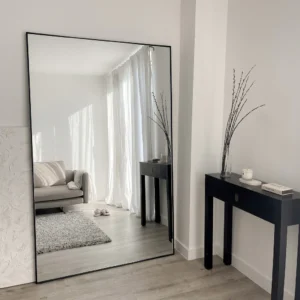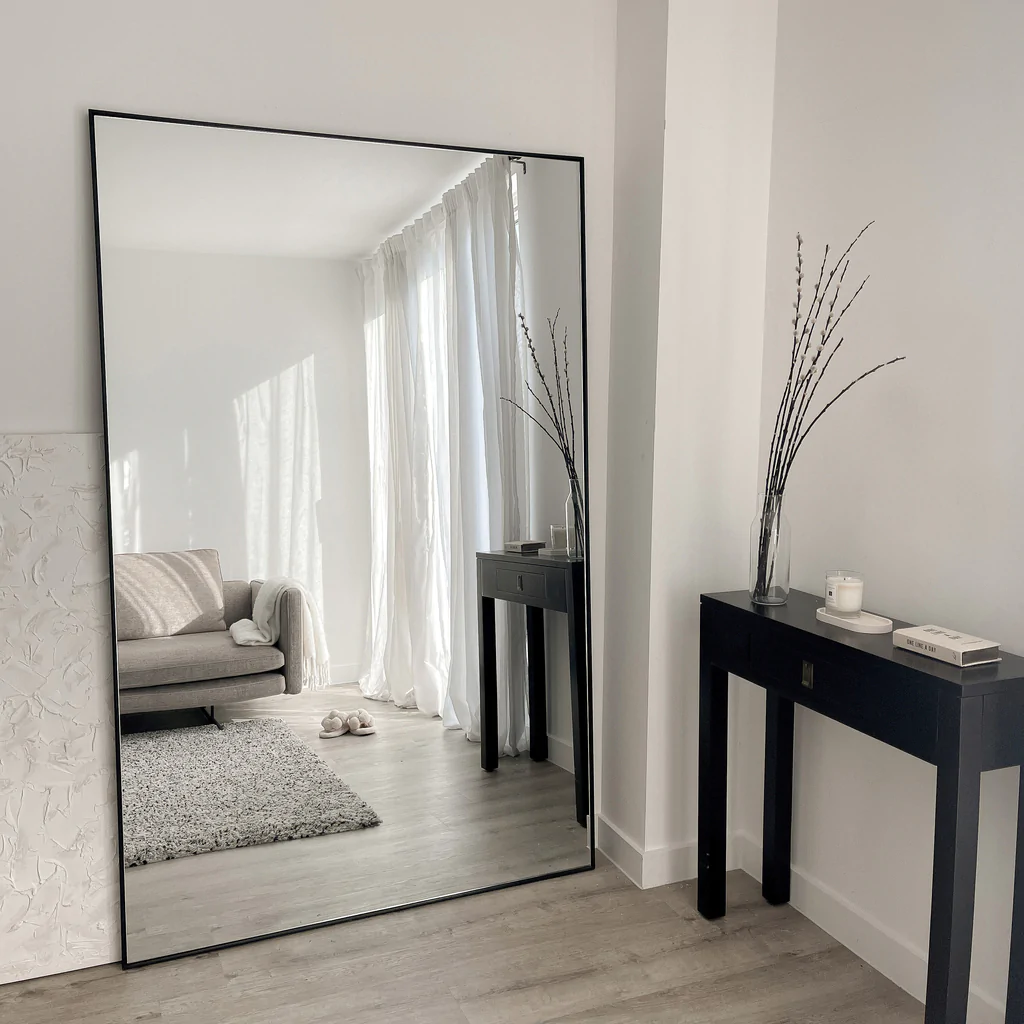
Interior decorators and homeowners value mirror for their divine beauty and exceptional charm. Mirrors can enhance the aesthetics of any room they are placed in. They reflect light, making a small space appear larger and brighter. Additionally, mirrors can create the illusion of more windows in a room. Mirrors can make a space appear more open and inviting when placed strategically.
When it comes to home décor, few things make as big of an impact as a wall mirror. Not only do they add a touch of style to any room, but they can also help make it appear larger and brighter. But with so many different types and sizes of wall mirrors available, how do you know which one is right for your space? Here are a few tips to help you choose the perfect wall mirror for your home.
Size
When considering what size wall mirror to buy, there are a few things to remember. The first is the size of the room the mirror will be hung. A large mirror in a small room can make the space feel even smaller, so choosing a size that will fit well with the room’s proportions is essential. The second thing to consider is what you’ll use the mirror for. If you’re looking for a functional piece that will be used for tasks like getting ready for your day, then you’ll want to ensure the mirror is large enough to give you a clear view. However, if you’re buying a wall mirror primarily for decorative purposes, you can be more flexible with the size. The third and final thing to keep in mind is your budget.
Shape
When considering what shape of wall mirror to buy, there are a few key things to remember. First, consider the available space and what shape will fit best. Second, think about the overall style of your home and what form will complement it. Finally, think about your style and what shape will best reflect that. With these things in mind, you should be able to find the perfect wall mirror for your home.
Types of mirrors
There are many different types of mirrors, each with its unique characteristics. Here are a few of the most common types of mirrors:
● Silver mirror
Silver is a perfect light reflector, making it an excellent mirror material. Silver mirrors are used in various applications, including telescopes, microscopes, and laser systems.
Because silver is such an excellent reflector, it is often used in optical systems where high reflectivity is critical. Silver mirrors are used in telescopes to reflect light from distant objects back to the eyepiece. They are also used in microscopes and laser systems to reflect light onto the observed or measured object.
● Gray mirror
A Gray mirror is a type of mirror made of a thin layer of aluminum deposited onto glass. Gray mirrors are usually used in telescopes and other scientific instruments.
Gray mirrors are very efficient light reflectors and can reflect up to 99% of the light that hits them. They also have very low absorbance, meaning they do not absorb much of the light that hits them. Gray mirrors are often used in applications where high reflectivity and low absorption are required, such as in telescopes and solar panels.
● Bronze mirror
Bronze mirrors have been used for centuries and are still popular today. Bronze mirrors are known for their durability and ability to reflect light well. Bronze mirrors are usually used in decorative applications but can also be used in functional applications like bathrooms or front windows.
● Antique mirror
A popular type of mirror is the antique mirror. These mirrors are often used in homes to add a touch of elegance. Antique mirrors are available in various styles and can be found at multiple retailers.
When shopping for an antique mirror, it is essential to consider the mirror’s style and the room’s overall décor. Antique mirrors can be costly, so shopping around and comparing prices is necessary before making a purchase.
Place of installation
When considering the purchase of a wall mirror, it is essential to keep in mind the intended location of the mirror. The mirror’s size, shape, and style should all be considered when making a decision.
For example, a large rectangular mirror may be best suited for hanging over a fireplace, while a small round mirror might be better suited for an entryway. The wall on which the mirror will be suspended is also essential. A heavy-duty wall hook is necessary for hanging a mirror on drywall but not required for turning it on plaster or wood.
Once the perfect mirror has been found, hang it correctly so that it will last many years to come.


